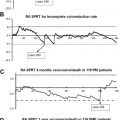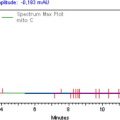
As such, I thought it would be appropriate to start this preface with a summary of the comments, challenges, and future directions outlined by Drs Sugarbaker and Petrelli in the first issue. I will follow with a description of the current articles and, finally, this preface concludes with an analysis of where we are now, a decade later, and where we are headed over the next decade in respect to the current challenge for multidisciplinary management of peritoneal surface malignancies.
Ten years ago
The first issue presented the current state-of-the-art and provided the possible directions for future research over the next decade for peritoneal surface malignancies. Dr Sugarbaker pointed out that there are often disagreements concerning the time at which a clinical research project matures into “standard of practice” but that, in his opinion, cytoreductive surgery (CRS) and hyperthermic intraperitoneal chemotherapy (HIPEC) represented the current standard of practice for patients with Pseudomyxoma peritonei of appendiceal origin as well as for patients with malignant peritoneal mesothelioma. In regards to colorectal cancer with peritoneal dissemination, he mentioned the phase III study by Drs Verwaal and Zoetmulder and commented that this unique trial may stand alone as the only randomized study required in this group of patients. He added that perhaps 15,000 colorectal cancer patients in the United States would be candidates for evaluation for this therapy. In regards to gastric and ovarian cancers, he indicated the need to establish the role of hyperthermic intraoperative intraperitoneal chemotherapy.
He concluded by stating that it may be recognized that a requirement for change in the standard of practice exists in patients with peritoneal surface malignancy and that what is less clear is the proper choice of perfusion techniques and chemotherapeutic options that will optimize these favorable results. More phase III studies are necessary to establish the knowledgeable use of perioperative intraperitoneal chemotherapy in the adjuvant treatment of gastrointestinal and ovarian cancers and Sugarbaker emphasized that quantitative prognostic indicators are extremely important; they will continue to play a role in the refinement of the most important aspect of this treatment to date, proper selection of patients.
Dr Petrelli asked the readers to be careful when distinguishing between standard of care and investigational treatment and recognized that this is sometimes a difficult issue to resolve. He added that what we do know is that the standard of care for patients with peritoneal surface malignancies involves a multidisciplinary team approach. He praised the commitment of all the authors to finding the best treatment for this group of patients and that continued research and development of prospective randomized trials will allow the field to move forward successfully.
He outlined four areas for which there is room for research:
- 1.
The proper choice of perfusion techniques and chemotherapeutic options.
- 2.
The amount of heat necessary for an optimal cell kill, which would result in acceptable morbidity and mortality.
- 3.
A simpler and less costly perfusion apparatus.
- 4.
Finding quantitative prognostic indicators that will allow proper selection of patients for therapy.
Ten years later
This second issue represents once more the state-of-the-art description by experts from around the world on the current status and future directions regarding the management of the most common peritoneal surface malignancies. Much has happened in this last 10 years and the readers will witness through these articles the tremendous efforts around the world dedicated to advance this field of peritoneal dissemination from gastrointestinal and gynecological malignancies. We have included articles that focus on patient selection for multimodality treatments that combine cytoreductive surgery to eradicate all visible metastatic disease to the abdomen and pelvis, coupled with HIPEC to eradicate microscopic residual disease, and the different methods to deliver the heated intraperitoneal perfusion. Readers will become familiar with the steep learning curve for this procedure, the anesthetic challenges as a result of induced hyperthermia in the setting of lengthy operations, and the role of laparoscopy in evaluating patients for cytoreductive surgery and treating intractable ascites. Additional articles describe the important contribution of pharmacodynamic and pharmacokinetic data to the science of HIPEC; the need for replacing histological examinations with genetic signatures in order to select patients better for intravenous systemic chemotherapy before, after, or in place of cytoreductive surgery and HIPEC; results from the only prospective randomized study comparing HIPEC versus no HIPEC after cytoreductive surgery in patients with gastric cancer with peritoneal dissemination; the ongoing prospective randomized studies and the incredible frustration with trying to conduct such trials; an excellent article on ovarian cancer, the ultimate biological model to study HIPEC; and, finally, an article with a suggestion for intriguing roles for HIPEC in the prophylactic setting.
Stay updated, free articles. Join our Telegram channel

Full access? Get Clinical Tree







